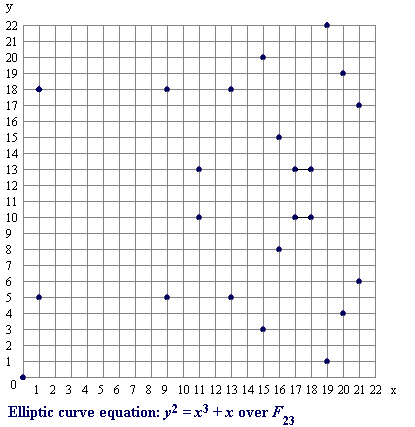As a very small example, consider an elliptic curve over the field F23. With a = 1 and b = 0, the elliptic curve equation is y2 = x3 + x. The point (9,5) satisfies this equation since:
y2 mod p = x3 + x mod p
25 mod 23 = 729 + 9 mod 23
25 mod 23 = 738 mod 23
2 = 2
The 23 points which satisfy this equation are:
(0,0) (1,5) (1,18) (9,5) (9,18) (11,10) (11,13) (13,5)
(13,18) (15,3) (15,20) (16,8) (16,15) (17,10) (17,13) (18,10)
(18,13) (19,1) (19,22) (20,4) (20,19) (21,6) (21,17)
These points may be graphed as below:

Note that there is two points for every x value. Even though the graph seems random, there is still symmetry about y = 11.5. Recall that elliptic curves over real numbers, there exists a negative point for each point which is reflected through the x-axis. Over the field of F23, the negative components in the y-values are taken modulo 23, resulting in a positive number as a difference from 23. Here -P = (xP, (-yP Mod 23))